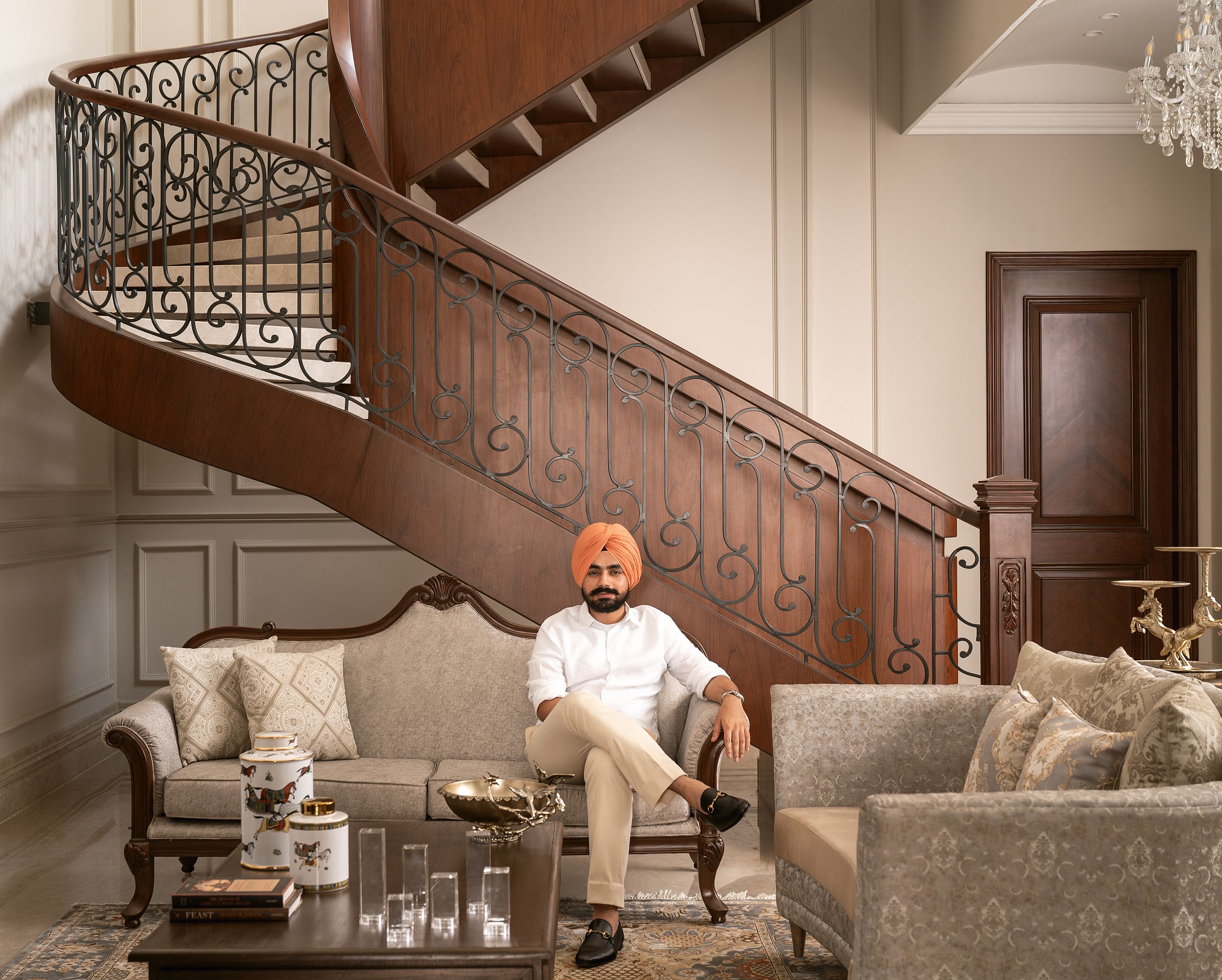
What motivated you to establish a studio rooted in the philosophy of timelessness?
The idea was to create a one-of-a-kind design practice that transcends conventional boundaries by uniting architecture, interiors, product and lifestyle design under one roof. From the outset, I wanted HBS to be more than just a studio that responds to briefs—I envisioned a space where creativity, expression, and functionality could coexist in every detail.
Timelessness became the natural foundation for this because it allows us to design with a long view in mind. We are not interested in chasing trends; we are focused on crafting spaces and objects that feel deeply considered, emotionally resonant, and built to evolve with time. That commitment to lasting design is what drives everything we do.

In your view, what does timeless architecture mean in a world that is changing so rapidly?
We live in a world that moves at an incredible pace—technologically, socially, and culturally. In that context, timeless architecture offers something grounded. It doesn’t chase change but embraces evolution in a considered, reflective way. For me, it’s about designing spaces that are emotionally intuitive and contextually sensitive—places that remain relevant not because they resist change but because they’re rooted in something deeper than trend.
How do you approach the balance between classical elegance and bold modernism?
The balance between classical elegance and bold modernism is at the heart of how I think and work. I don’t see classical and modern as opposing forces—they are part of the same design conversation. At HBS, we embrace subtle exuberance; we may use classical proportions or symmetry but reinterpret them through modern materials, detailing, and spatial relationships. It’s about striking the perfect balance—refined yet expressive.

When working on luxury residences or commercial projects, how do you ensure the architecture remains meaningful and enduring over time?
For me, luxury is more than finishes. It’s about feeling. We always begin by understanding the lifestyle and emotional needs of the people who will inhabit the space. Then, we layer in elements of craft, story, and spatial richness. A meaningful space is one that continues to reveal itself over time and that requires thoughtfulness at every level, from planning to the smallest detail. That’s where longevity is built.
Could you share a project that best represents your studio’s belief in “contextual yet timeless” design?
One project that truly reflects our belief in contextual yet timeless design is Anugraha, a private residence in Amritsar—my hometown. It’s also one of my personal favourites. The home strikes a thoughtful balance between classic design language and modern-day comfort. What makes Anugraha so special is how it responds to the city’s rich cultural history while offering a contemporary, elevated living experience.

We used locally sourced materials and handcrafted furniture, which gave the home a strong sense of place and authenticity. Every element is designed to feel rooted yet forward-looking. The central staircase, made from wrought iron and aged veneer, acts as a sculptural focal point and captures the spirit of quiet elegance we strive for. The double-height lobby and its serene internal courtyards add to the sense of calm and permanence. For me, Anugraha perfectly encapsulates what we aim to do at HBS—create deeply contextual, emotionally resonant, and timeless spaces by design.
At what stage in the design process does your philosophy of timelessness guide the most critical decisions?
It begins right at the start. In the conceptual phase, we lay the groundwork for everything—proportion, atmosphere, intent. If we get that right, every subsequent decision has a clear compass. Throughout the process, whether material selection or spatial layering, we keep coming back to the same question: will this still resonate ten years from now? That’s our benchmark.

What are the biggest challenges facing architects today in creating architecture with lasting cultural and physical relevance?
One of the biggest challenges today is the pressure to design for immediacy. In an age driven by visual gratification and fast-paced consumption, especially through digital platforms, there’s a tendency to prioritise what looks impressive at the moment over what will endure meaningfully over time. For architecture to hold lasting cultural and physical relevance, it needs depth, context, and clarity of purpose, which takes time, thought, and conviction.
Another challenge is maintaining authenticity in an increasingly globalised design language. While access to international styles and materials has expanded, there’s a real risk of losing cultural nuance. For me, it’s essential to design in a way that responds to place through materiality, craft, and narrative, without becoming pastiche. And, of course, the responsibility of designing sustainably, both environmentally and socially, is more urgent than ever. Balancing these layers while still creating something emotionally compelling and functionally seamless—that’s the challenge, as well as the opportunity.
About Harkaran Singh Boparai
Harkaran Singh Boparai is a young and dynamic Indian architect, product designer, fashion enthusiast, and entrepreneur with a relentless passion for design and an unstoppable drive for growth. As the Founder & Principal Architect of Harkaran Boparai Studio (HBS), a multidisciplinary architecture and interior design studio based in Delhi and Amritsar, Harkaran has been fuelling the future of design, meticulously crafting spaces that inspire, from grand visions to the finest details.
With over seven years of experience, he leads the principal design team at the firm along with managing the product design and execution department. Harkaran’s design philosophy is deeply driven by expression, reflecting his desire to channel his creative mind wanderings into design innovations. With a passion for multitasking and working on a diverse range of projects, Singh is constantly creating and crafting novel ideas across diverse design disciplines; This relentless creativity defines his work at HBS, where every project showcases his commitment to originality. With a vision to see his studio recognised globally for its innovative ventures across various creative fields, Harkaran devotes all his efforts to nurturing and maintaining the firm’s creative spirit.
After graduating as a gold medallist in architecture from Guru Nanak Dev University, Harkaran began his practice while still pursuing his bachelor’s degree. Throughout college, he distinguished himself as an avid debater and honed his skills under the guidance of renowned architects like Reza Kabul. His work has been well appreciated for its nuanced approach to subtle exuberance. While Harkaran is primarily recognised for his residential projects at HBS, under his leadership, the studio is now expanding into new realms, including furniture and product design.
With a dedicated focus on creating spaces that improve the overall spatial experience, Harkaran’s expertise lies in seamlessly blending aesthetics and functionality, resulting in designs characterised by elegant and sophisticated elements. Over the years, he has amassed extensive knowledge and experience, working closely with his team to design and deliver projects to the last detail. Harkaran has received numerous accolades for his work in the luxury segment, including the National Design Award, Emerging Entrepreneur Award, and Rising Stars of 2023 by Surfaces Reporter Magazine, amongst others. He has also been widely featured in renowned publications such as AD, Good Homes, GQ, Trends and Architects & Interiors India, in addition to other design magazines.
Images ©HBS

